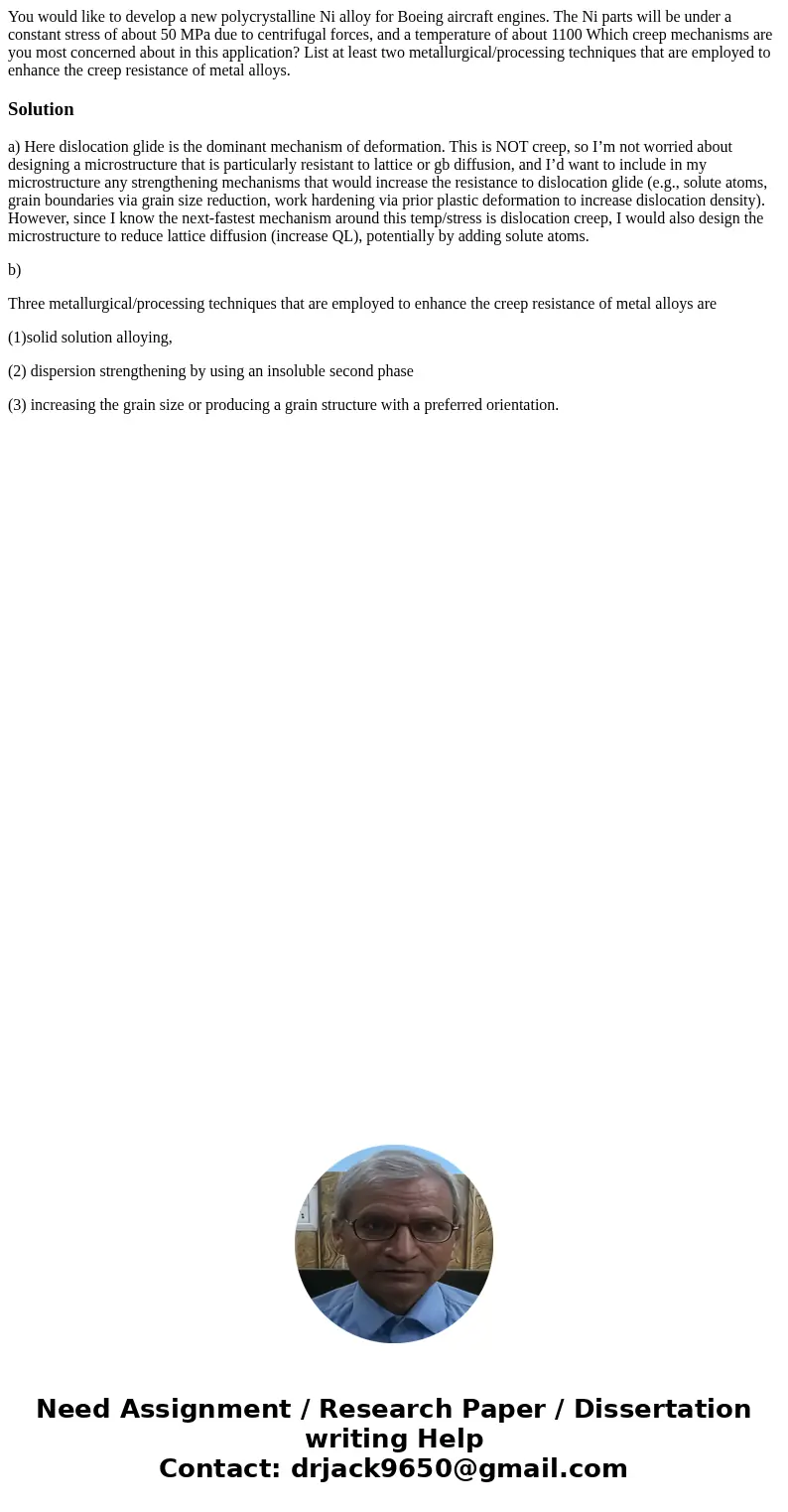You would like to develop a new polycrystalline Ni alloy for
Solution
a) Here dislocation glide is the dominant mechanism of deformation. This is NOT creep, so I’m not worried about designing a microstructure that is particularly resistant to lattice or gb diffusion, and I’d want to include in my microstructure any strengthening mechanisms that would increase the resistance to dislocation glide (e.g., solute atoms, grain boundaries via grain size reduction, work hardening via prior plastic deformation to increase dislocation density). However, since I know the next-fastest mechanism around this temp/stress is dislocation creep, I would also design the microstructure to reduce lattice diffusion (increase QL), potentially by adding solute atoms.
b)
Three metallurgical/processing techniques that are employed to enhance the creep resistance of metal alloys are
(1)solid solution alloying,
(2) dispersion strengthening by using an insoluble second phase
(3) increasing the grain size or producing a grain structure with a preferred orientation.

 Homework Sourse
Homework Sourse